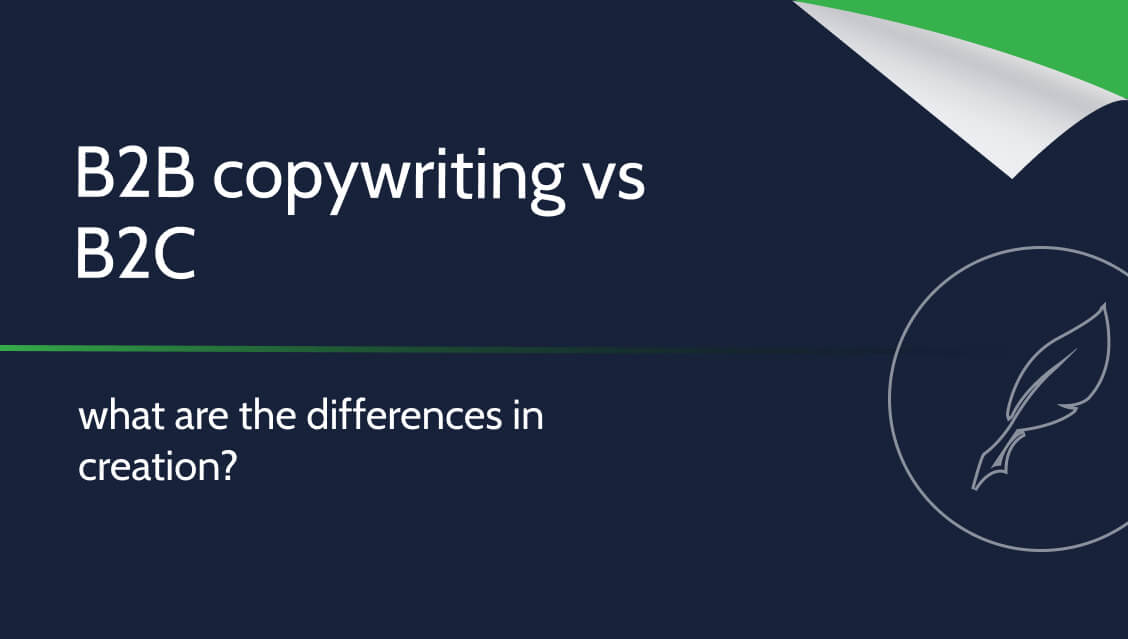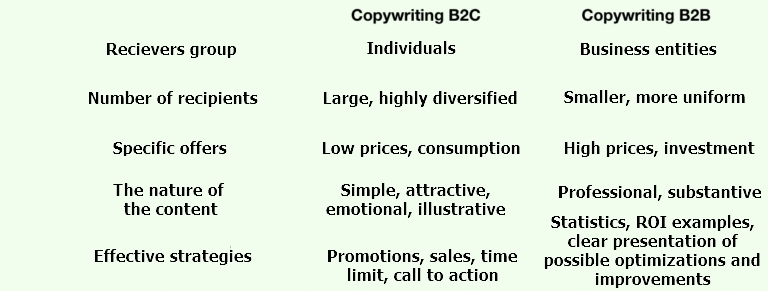B2B copywriting vs B2C – what are the differences in creation

Are you wondering what the differences are in formulating advertising messages for companies and ordinary people? Read this article and learn how to precisely reach your audience with your content. Here are the differences between B2B and B2C copywriting in a nutshell!
B2B and B2C copywriting – definitions
First, let’s explain the terms we will use.
B2C (business to customer) defines a business relationship in which one party is the company (business) and the other party is the retail customer (customer).
- A dietitian who, as part of his business activity, prepares diets for ordinary consumers;
- A hairdresser whose clients are also private individuals;
- Markets where products are bought by retail customers.
- Furniture stores
- Shoemaker
And so on and so forth. Let us remember that in the case of B2C, the customer is always a private person, which means that the group of recipients is large, but unspecified.
B2B (business to business), in turn, defines a business relationship in which both parties are business entities. In other words, a company offers products or services to another company.
- A copywriter who creates professional contents for companies.
- A programmer who creates websites or systems that optimize the organization of enterprises.
- SEO agencies that position other companies.
- Google displaying ads from contractors.
Importantly, the above abbreviations describe only zero-one relationships, which in fact can be mixed. For example, a furniture store may sell furniture to retail customers, but also equip corporate offices, etc.
And what about copywriting?
It is already clear that each company has a specific group of recipients to whom messages are addressed. Of course, you need to adapt the creation of content to this, which is divided into:
- B2C copywriting – where the recipients are private individuals.
- B2B copywriting – where the recipients are companies.
However, this is not the only determinant that should be taken into account. Individual copywriting must also take into account:
- Company image (which determines the degree of formality of the relationship between the company and its customers)
- Type of content (including its destination)
- Competitor’s actions (which are an indication of how to formulate effective texts)
- Specificity of the offer (are existing needs met or do they need to be created)
Copywriting B2B vs. B2C
We will stick to the basic distinction – the audience group.
In the case of B2C copywriting, the content needs to be much more universal.
Customers vary in age and education level, and products are cheaper and more related to consumption than investment.
For this reason, a language that is simple, attractive, attention-grabbing, and appealing to emotions rather than reason is necessary. Promotions, creating time pressure, and adding CTAs work great. The target effect is to influence the recipient’s imagination and encourage him to make a transaction.
The procedure changes dramatically in B2B copywriting, where emotions do not play a major role in making a purchase decision. Entrepreneurs or marketing departments make transactions based on cold calculation, substantive arguments, return on investment, all pros and cons.
Therefore, you should avoid baseless phrases like “Highest quality! Don’t wait, buy now! Instead, numbers, statistics and justifications will prove effective. If possible, it is a good idea to include a portfolio or examples of how the proposed solution contributed to solving the problems of other companies. You can use more professional nomenclature, but within reason – a lot still depends on what stage of the sales funnel the recipients are at and what their number is.
The information obtained is summarized in the table below:

Summary
- The business relationship is only one of the elements influencing the development of individual, effective content by a copywriter.
- However, we hope that after reading this article, you will have learned the foundation on which the content you create should be based.
- Copywriting has many dependencies, which means that there is no single method for success. This is the price we pay for inexhaustible creativity and uniqueness in marketing.

















Leave a Reply